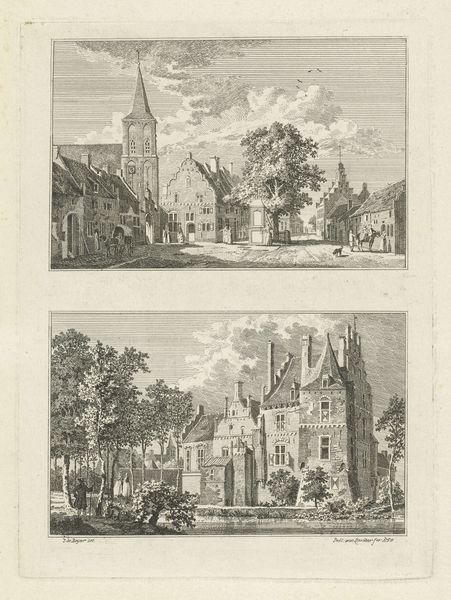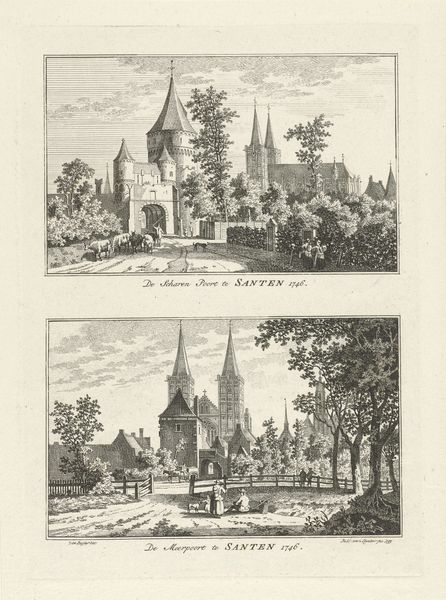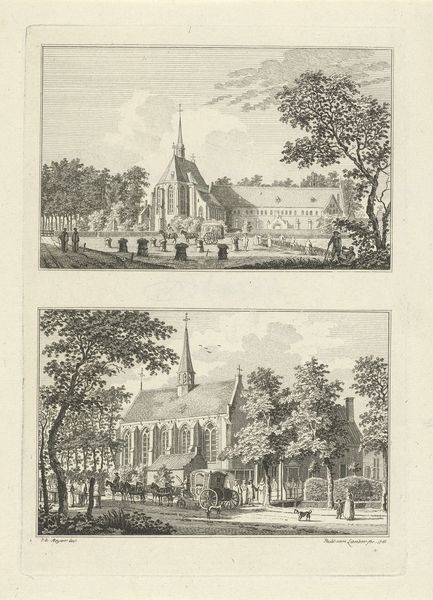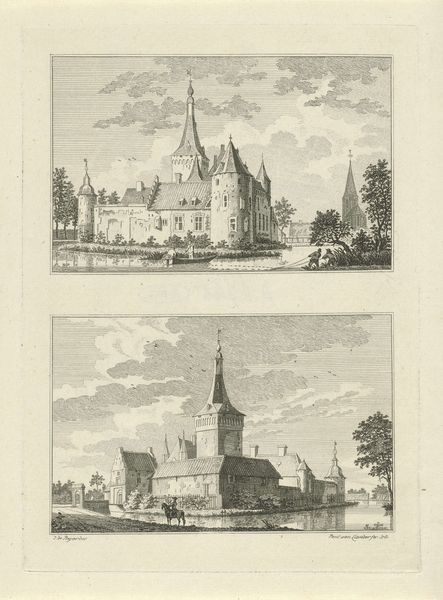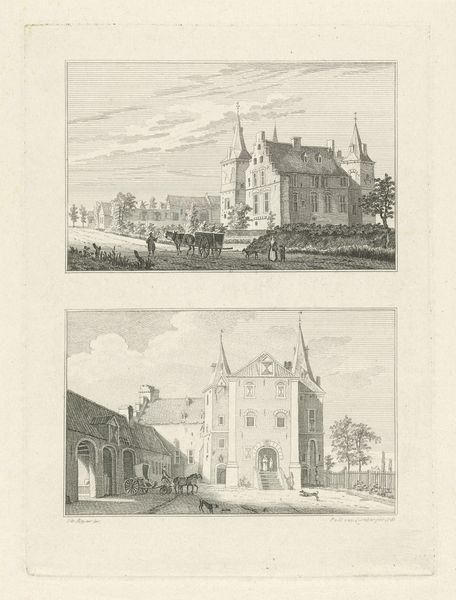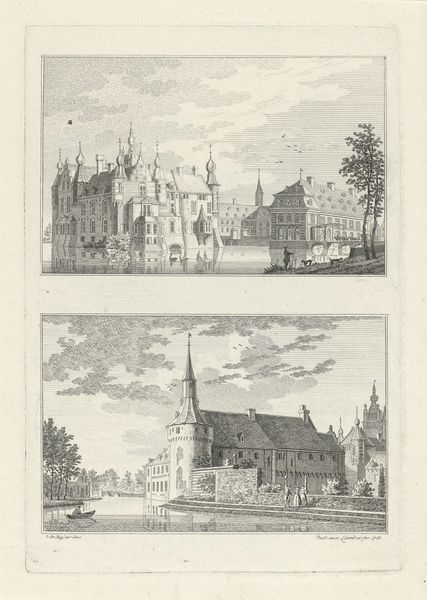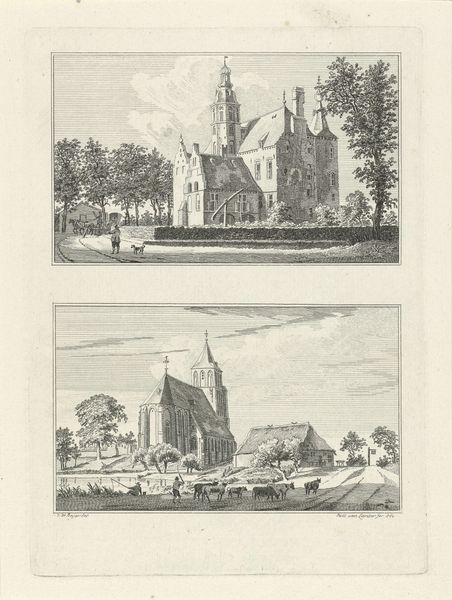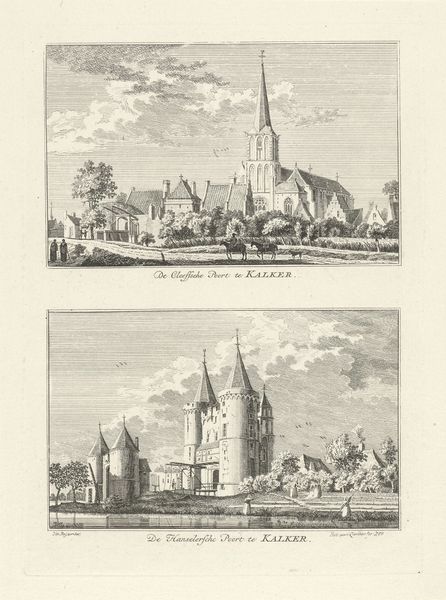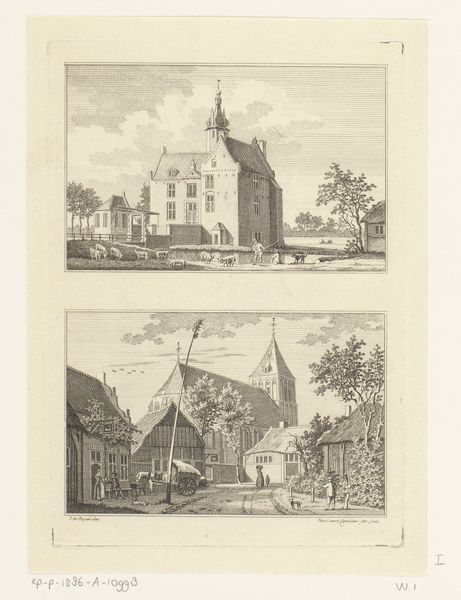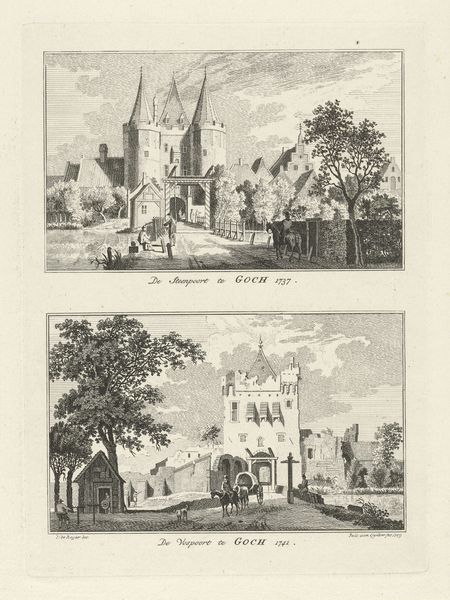
Dimensions: height 201 mm, width 144 mm
Copyright: Rijks Museum: Open Domain
This print, Steenpoort en Leeuwpoort te Emmerik, was made around 1740 by Paulus van Liender, using etching and engraving on paper. These processes involve coating a metal plate with a waxy, acid-resistant material, drawing an image, and then submerging it in acid. The acid bites away the exposed metal, creating lines that hold ink. The matrix is then carefully inked and pressed onto paper. Look closely, and you can see the fine lines that define the architecture and landscape, giving form to the scene. Van Liender would have been trained in this tradition, part of a lineage of printmakers who developed sophisticated techniques to reproduce images and disseminate information in early modern Europe. The making of prints like this one involved skilled labor, and the resulting images played a vital role in shaping perceptions of places and events. By understanding the materiality and process behind this work, we can better appreciate its role in the visual culture of its time.
Comments
No comments
Be the first to comment and join the conversation on the ultimate creative platform.
